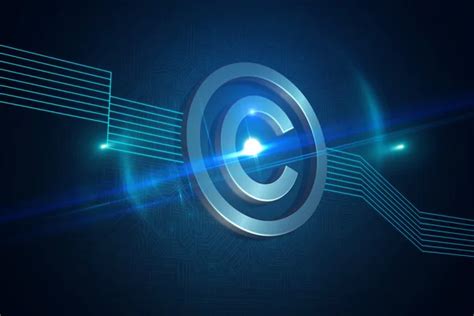Civil procedure forms the backbone of the legal system, governing the process by which civil disputes are resolved in court. Understanding its fundamentals is crucial for navigating the complexities of litigation. This article provides a comprehensive overview of civil procedure, starting with an introduction to its core principles. We will explore the various stages of a civil lawsuit, from the initial filing to the final judgment. Key terminology and concepts will be clarified to enhance your understanding. Additionally, we’ll examine the rules and regulations that shape civil procedure and address common challenges along with best practices for effectively managing a civil case.
alijyun.com will lead an exploration of this topic in detail.
1. Introduction to Civil Procedure
Civil procedure is the framework that governs how civil cases are managed and adjudicated in the court system. It encompasses the rules and processes that guide the progression of a lawsuit from its inception to its resolution. This system is designed to ensure fair and orderly conduct of legal disputes, providing a structured method for parties to present their claims and defenses. At its core, civil procedure ensures that legal disputes are handled consistently and transparently, allowing for the resolution of conflicts in a manner that upholds justice.
Understanding civil procedure is essential for anyone involved in a lawsuit, whether as a plaintiff, defendant, or legal professional. It encompasses various stages, including filing a complaint, serving notice, discovery, trial, and potential appeals. Each stage has specific requirements and timelines that must be adhered to, making familiarity wit

2. Stages of a Civil Lawsuit
The stages of a civil lawsuit outline the process through which a dispute is resolved in court. It begins with the filing of a complaint by the plaintiff, outlining the grievance and the relief sought. The defendant then receives a summons and complaint and must respond, typically with an answer or motion to dismiss.
Following this, the discovery phase allows both parties to gather evidence and information through depositions, interrogatories, and document requests. Pre-trial motions and hearings may address procedural issues before the case proceeds to trial. At trial, both sides present their evidence and arguments to a judge or jury, who then renders a verdict.
Post-trial, there may be opportunities for appeals if either party believes there were errors in the trial process. This structured progression ensures a thorough examination of the

3. Key Terminology and Concepts
Key terminology and concepts in civil procedure are essential for understanding the litigation process. A “complaint” is the initial document filed by the plaintiff outlining the allegations and relief sought. The “answer” is the defendant’s formal response to the complaint. “Discovery” refers to the phase where both parties exchange evidence, including depositions, interrogatories, and requests for documents.
“Motion” is a request made to the court seeking a specific ruling or order, such as a motion to dismiss. The “pleadings” are the formal written statements of the parties’ claims and defenses. “Summary judgment” is a decision made by the court without a full trial, based on the evidence presented. “Verdict” is the decision reached by the judge or jury at the trial’s conclusion. Understanding these terms helps navigate the civil procedure and ensures effective participation in the legal process.

4. Rules and Regulations Governing Civil Procedure
Rules and regulations governing civil procedure are designed to ensure a fair, orderly, and efficient legal process. These rules are primarily established by state and federal laws, as well as by individual court rules. At the federal level, the Federal Rules of Civil Procedure provide a comprehensive framework for managing civil cases in federal courts. These rules cover all aspects of civil litigation, including filing procedures, discovery processes, and trial conduct.
Each state has its own set of procedural rules, which may vary from federal rules but generally follow similar principles. State rules address procedures for initiating a lawsuit, serving legal documents, and managing case schedules. Courts may also have local rules that provide additional guidelines specific to their jurisdiction.
Compliance with these rules is crucial for the successful progression of a case. Failure to adhere to procedural requirements can result in delays, dismissals, or adverse judgments. Legal professionals must be well-versed in the applicable rules to effectively represent their clients and navigate the complexities of the legal system. Understanding and applying t
5. Common Challenges and Best Practices
Navigating civil procedure involves overcoming several common challenges. One major issue is adhering to strict deadlines and procedural requirements. Missing a filing deadline or failing to follow discovery rules can lead to case dismissals or unfavorable outcomes. Another challenge is managing complex documentation and evidence, which requires meticulous organization and attention to detail.
Effective communication between parties and their legal representatives is crucial. Misunderstandings or lack of clarity can result in procedural errors or disputes that complicate the case. Additionally, dealing with opposing parties who may employ delaying tactics or raise procedural objections can create obstacles.
Best practices for managing these challenges include thorough planning and organization of all case-related documents and deadlines. Utilizing case management tools and software can help track important dates and tasks. Regular and clear communication with clients and opposing counsel can prevent misunderstandings. Seeking timely advice from experienced legal professionals ensures that procedural requirements are met and strategic decisions are well-informed. Implementing these practices can streamline the litigation process and enhance the likelihood of a favorable outcome.
Understanding civil procedure is fundamental for navigating the legal system effectively. From the initial filing of a complaint to the final judgment, each stage of a civil lawsuit involves specific rules and procedures that must be followed. Familiarity with key terminology and concepts, adherence to governing rules and regulations, and the application of best practices can significantly impact the outcome of a case. By grasping these essentials, individuals and legal professionals can better manage the complexities of litigation and work towards a fair resolution of disputes.
alijyun.com

